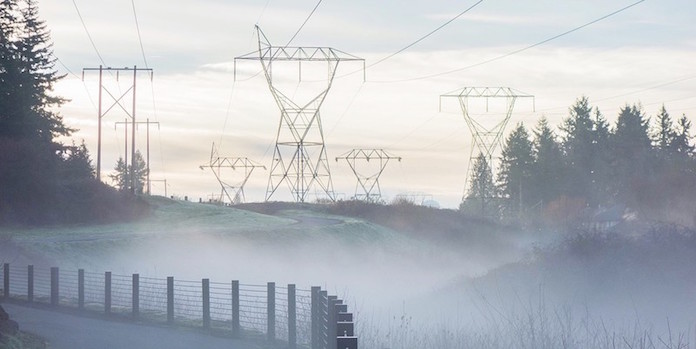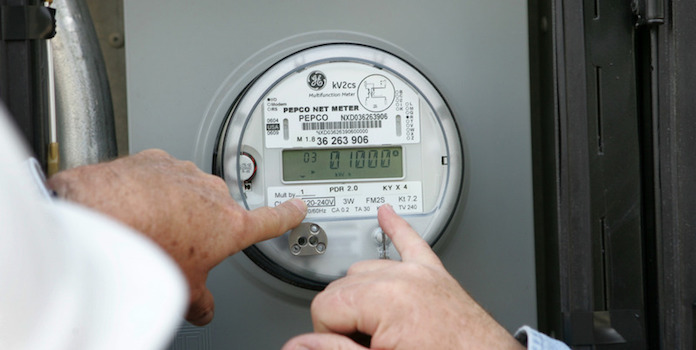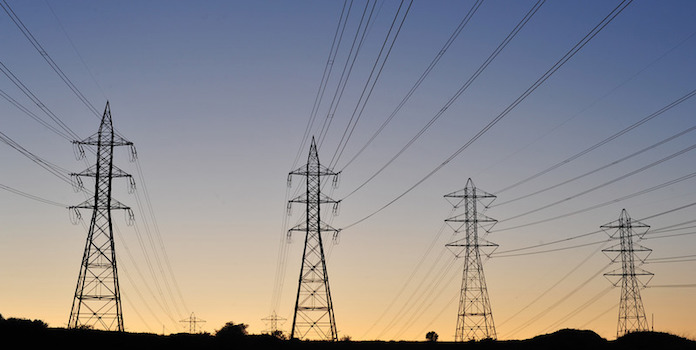Is Life Without Net Metering a Life Worth Living?

Net metering makes solar a much more lucrative investment, but what if your state does not have it?
The majority of states in the US offer retail-rate net metering (or NEM, net energy metering), and you’re probably aware of a lot of them: California, Colorado, and Oregon, to name a few. Net metering is a basic building block of solar savings and the fact that this policy is so prevalent across the country is great news for most homeowners.
Today, though, let’s focus not on those that have net metering, but on those that don’t have net metering.
A handful of states in the US are holding out on passing mandatory net metering policies and, in other states, utilities are threatening net metering.
Also Read About: Net Energy Metering(NEM) 3.0
Today, we thought it might be good to break down what a life without net metering looks like. Can you still save money going solar? Can you even still connect your solar installation to the grid? (Not to break the news too early, but the answer to both questions is “yes.”)
Solar is growing even without net metering
Big national installation companies like SolarCity and Sunrun make a huge deal out of the importance of retail-rate net metering. If a state fails to make retail-rate net metering mandatory, those big solar companies typically don’t set up shop there. If a state stops its favorable net metering policies, they leave (like Nevada in early 2016).
These solar installer/financiers (known as “solar integrators”) need the high savings that retail-rate net metering provides to make their leases and PPAs financially beneficial for both their customers and themselves. Basically, without net metering, they just can’t make a profit.
But unlike those leases and PPAs from big companies, homeowners who purchase their own installation – or take out a small loan – can still come out ahead, even without full retail-rate net metering!
While the solar industry is still quite small in states without any net metering regulations, solar is growing bit by bit. Even in these non-NEM states, homeowners are still installing solar, typically with cash or loan purchases!
Consider that from 2015 to 2016, solar employment grew by 85% in Alabama, 106% in Oklahoma, and 60% in Idaho – all states that don’t require utilities to offer net metering incentives.
If solar didn’t make financial sense in these non-NEM states, you’d think the industry would be dying off, right? But with the federal tax credit, decreasing solar costs, and increasing utility prices, homeowners who aren’t eligible for full retail-rate NEM can still save money by going solar.
Let’s find out what life without net metering looks like.
The history and definition of net metering
Net metering is a very simple system wherein the utility watches how much electricity flows into a solar home (or business) and how much flows out of the home during a billing cycle (which is typically a month). At the end of each billing cycle, they then calculate the home’s net energy use.
For example, if your solar installation produced 900kWh of electricity last month, and you only used 850 kWh, that extra 50 kWh is added as a credit – at retail rate – to your account, which you can pull from at a later date. So, if you pay $0.15 per kWh, you’d get a $7.50 bill credit (50 kWh X $0.15 = $7.50).
If the next month, you produce 900 kWh again but use 1000 kWh, you can pull from that credit to pay your bill.
Solar installations are typically designed to cover 100% of a home’s energy use over the course of a year. That caveat about ‘over the course of a year’ is important, as both the home’s energy use and solar installation’s production are seasonal. You’ll probably produce more electricity than you can use in the summer but then can pull from all those credits in the winter.
This is why net metering – and specifically retail-rate net metering – is so important. It allows you to store up credits on a one-to-one basis – put a kWh in the bank in the summer, take that kWh out in the winter.
Net metering began in the late 1970s and, when first introduced, utilities were excited to jump on the renewable bandwagon and gain some good publicity. Unfortunately, though, as we moved into the 1980s, utilities began to see net metering not as good publicity but as a threat to profits – leading us to the situation we are in today.
In the 1990s, seeing the benefits of renewable energy, more and more states began passing attractive net metering regulations to encourage homeowners and businesses to install solar and other renewable energy systems. With so many solar arrays on rooftops across the country, you can see that the plan is working!
Life without net metering
Unfortunately, there are a handful of states that don’t require utilities to offer retail-rate net metering – or any net metering at all. But it’s not all bad news.
First off, you control how much you save with solar. Since the utility doesn’t give you the full value for the electricity you put into the grid, you ‘lose’ money for each kilowatt-hour you don’t use.
With this in mind, if you want to increase your savings as much as possible, you’ll need to alter your energy use to coincide with your solar installation’s electricity production, typically around 10AM to 3PM.
Instead of washing dishes, doing laundry, and cranking up the AC when you get home after work (and when your solar system isn’t producing squat), consider setting timers for all these energy-hogging devices to run while your solar installation is pumping out free electricity during the middle of the day! Or, save your chores and do them on Saturday or Sunday.
The more energy you can use from your solar installation, the higher your savings will be, since you’re avoiding buying superfluous electricity from your utility.
Now for all the electricity that does go into the grid (and it is inevitable that this will happen), you’re not totally at a loss. Even if your state doesn’t require retail rate net metering, in most circumstances utilities will at least offer you credits at their avoided cost or wholesale cost.
Both of these are, in essence, the dollar amount that they would pay to either purchase the same amount of electricity from a generation company or produce that electricity themselves – typically about a 1/3 of the retail price.
Obviously, without retail-rate net metering, homeowners aren’t able to save as much going solar, but it can still be worthwhile, as we’ll show in the example below. If you live in a state without retail-rate net metering, don’t get too discouraged. Bill credits at your utility’s avoided cost are better than nothing at all!
Calculating solar savings without net metering
What are solar savings like in states without net metering? As mentioned, it all depends on your energy use – the more of your solar electricity you can use immediately, the more you save.
Let’s run through a step-by-step example of an Alabama home to calculate savings without retail-rate net metering. First, just like any other solar installation, we need to calculate the total savings by going solar:
- First, let’s figure out how big your solar installation needs to be. In Alabama, the average home uses 14,616 kWh each year. We head over to PVWatts and find a 10.5kW solar installation should cover 100% of your electricity use.A 10.5 kW installation in Alabama will produce 14,700kWh a year.
- Now let’s find the cost of that installation. After averaging out installation costs from myriad sources, we find that solar costs about $3.71 per watt in Alabama.For our 10.5 kW install, that’s $38,955 in total for the investment before applying the 30% federal tax credit.
- Solar installations typically produce power for about 25 years, so let’s now see how much that same amount of electricity would cost from the utility. After taking into account both your solar panels’ 0.8% drop in production (pg 6) each year due to wear and tear and Alabama utilities’ average annual price increase of 3.6%:(That’s a lot, right? Don’t believe us? Grab a spreadsheet and do the numbers yourself!)You would pay your utility about $68,500 over the next 25 years for the same amount of power as your 10.5kW installation would produce.
- Now let’s calculate our total savings by going solar! Subtracting our original investment from our avoided payments to the utility, we find our total net savings for this investment is right around $29,545.$68,500 – $38,955 = $29,545
Pretty good, right? I’d be pretty excited to save almost $30k!
Unfortunately, this isn’t the whole story. These savings are fairly accurate if you can either use all the electricity you produce directly in your home or are compensated for any power you add to the grid through retail rate net metering. If you aren’t eligible for net metering, or your net metering rates are only at avoided cost, your savings will be much lower.
As we mentioned, utilities that don’t offer retail-rate credits can still offer credits to solar customers at their avoided cost, typically around $0.03 per kWh. Alabama Power will pay you about $0.025 to $0.04 per kWh (pg. 2), depending on your rate type and season.
Obviously, calculating savings without retail rate net metering can be a bit more complicated, but we’re going to give it a shot. Let’s continue with our example above:
- Figure out how much solar electricity, in kWh, that you won’t be able to use immediately and will go into the grid.Estimating how much electricity you can’t use is the hardest part of this process. Talk to a few installers for some insight into the typical situation in your area.If you think you can only use 75%, then for your 10.5 kW installation that’s 3,675 kWh per year you WON’T be able to use and will go the grid
- Next, find the difference between the utility’s retail rate and avoided cost.If you pay $0.13 per kWh and their avoided cost is $0.03 per kWh, the difference is $0.10 per kWh.
- Now we need to find how much your savings are going to drop due to this lower rate.For our example, multiplying 3,675 kWh by $0.10 per kWh gives us $367.50 per year. Over the 25 year lifespan of your installation, this totals $9,187.50 in lost savings.
- Now subtract this amount from your total savings. For the 10.5kW system above, our total savings was $29,545.After accounting for the lower net metering rate, your savings drop to a still respectable $20,357.50 – about a 30% loss.
So even without full net metering, you can still save over $20k by installing a solar installation in Alabama, albeit a fairly large one. Even if you only use 50% of the electricity you produce, you’d save $11,170 over 25 years. Still not too bad, right?
Now obviously our calculations above are a bit simplified. For instance, to keep our example easy to follow, we used a single, assumed wholesale cost for all our calculations, not the seasonal rates Alabama Power really offers. We also don’t account for any fixed monthly fees that more and more utilities are charging their customers.
For the most accurate savings, talk to a local installer that is familiar with all the nuances of your utility’s rates, fees, and procedures.
Even still, our little example above shows two key insights:
- First, hopefully, it gives you an example to follow and gives you all the resources you need to calculate your own solar savings if you’re not eligible for net metering.
- Secondly, it shows that going solar without net metering can still be a financially lucrative investment!
Even if you don’t save as much financially, it’s important to note that one kilowatt-hour of clean, emissions-free solar electricity carries the same environmental benefits no matter what policies your state has passed. It doesn’t matter if you’re in solar-hugging California or solar-sad Oklahoma, your solar installation is still producing clean, renewable energy no matter what!
States with net metering, and states without
There are a wide variety of net metering laws across the US, but they generally fall into 1 of 3 categories: mandatory retail-rate net metering, mandatory net metering at avoided cost, or no statewide mandatory net metering.
There are currently 6 states without any statewide, mandatory net metering policies:
- Idaho
- Texas
- South Dakota
- Mississippi
- Tennessee
- Alabama
In most of these states – like Alabama in our example above – utilities will offer solar homeowners credits equal to their wholesale or avoided cost, though it isn’t required by law.
Eleven states require utilities to offer net metering, but allow the utilities to credit homeowners at less than retail rate – typically at avoided cost. These states include:
- New Mexico
- North Dakota
- Minnesota
- Wisconsin
- Nebraska
- Kansas
- Missouri
- Ohio
- Georgia
- Massachusetts
- Rhode Island
Oklahoma is an anomaly, as the state requires utilities to offer net metering but doesn’t require utilities to give any sort of credits for excess generation. This actually falls outside our definition of ‘net metering’, instead simply falling under ‘interconnection’.
In essence, Oklahoma mandates that utilities must allow solar homeowners to interconnect to their electricity grid, but not actually provide any financial benefits. If a utility does decide to offer NEM, they credit based on their avoided cost.
Nevada is also a special case. In June 2017, the state reinstated net metering after discontinuing the program in 2016. In the current form, Nevada’s net metering is a unique program that is unlike any other in the US. While the credits aren’t equal to the retail rate, they are much higher than wholesale prices or avoided costs.
If you’re in one of the states that require utilities to offer full retail-rate credits for any excess generation you add to the grid, rejoice!
If you live in a state listed above that does not require retail rate net metering, take heart, as net metering laws change fairly often. In fact, just in the 2nd quarter of 2017, 24 states either made changes to or at least considered changing their net metering policies.
If you think that just because you live in a state without net metering installing solar is a bad financial decision, think again! While it certainly cuts into your savings, you can still see a great return on your investment while decreasing your overall emissions and contributing to a cleaner environment.
Image Credits under CC License via Pixabay – 1 & Flickr – 2, 3, 4



